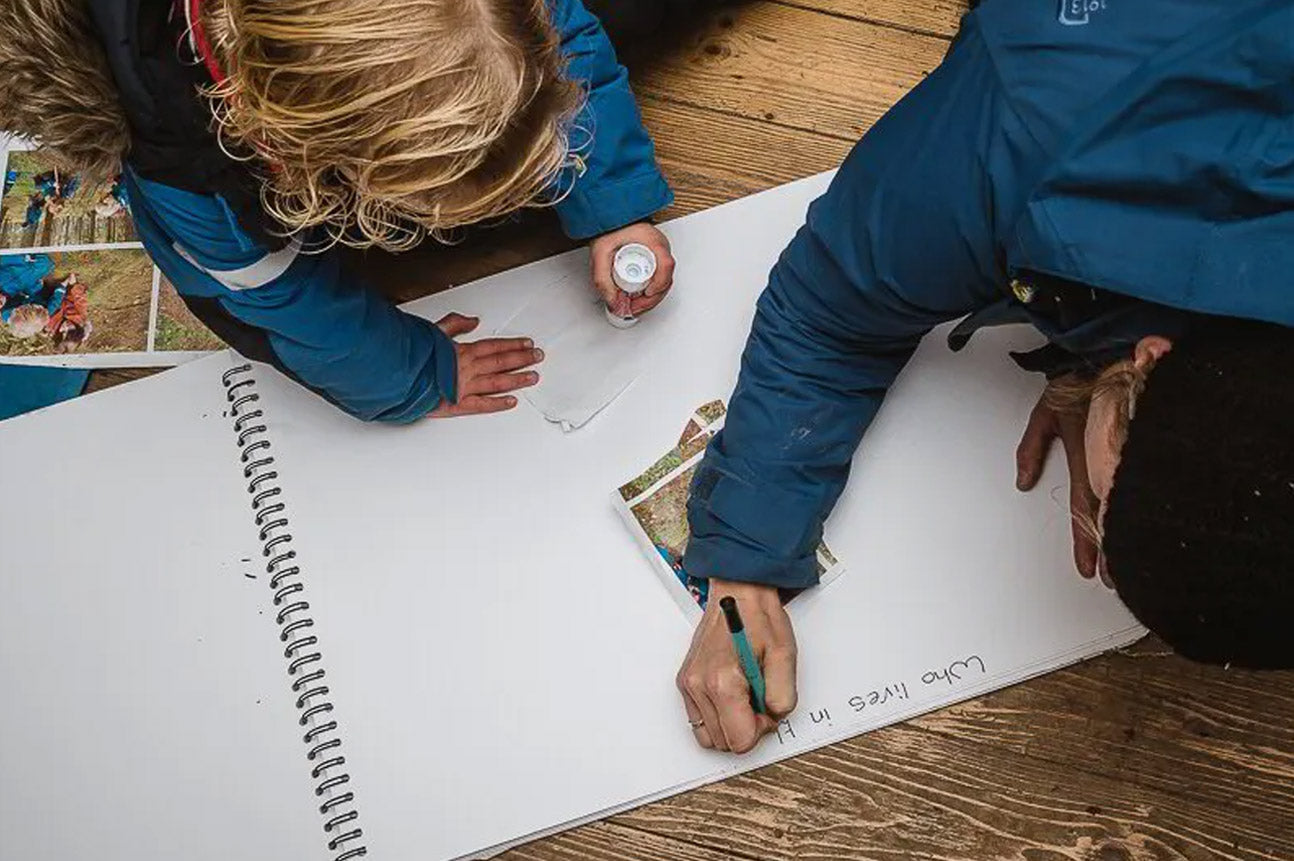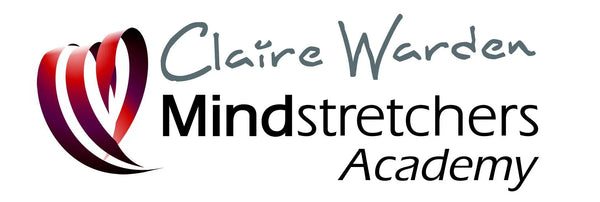The Floorbook Approach
Planning With and For Children
Dr. Claire Warden is an internationally renowned, award winning educational consultant and leader in early years education. With a PhD in nature pedagogy and child led inquiry, it's her mission to help children thrive by empowering others in early years to put children at the centre of what they do.
Over 35 years ago, in 1989, Dr Warden developed a brand new and innovative method of making planning and documentation more collaborative. It is an inquiry-based process that defines teaching strategies to create co-constructed programmes, where children and families are viewed as collaborators in the planning process.
This is what we know today as The Floorbook Approach which has grown into a well defined and theorised approach with global recognition. Floorbooks are now included in National curricular documents and endorsed by governing bodies around the world as examples of outstanding practice perfectly aligning to Children's Rights and collaborative practices.
The Floorbook approach is a protected methodology developed to ensure quality and integrity in early childhood education. To maintain high standards, we offer training and licensing for those who wish to use the approach correctly.
To preserve its integrity, Floorbooks® is a registered trademark to ensure that educators using this approach are properly trained and equipped to deliver its full benefits.
If you’re interested in learning how to use Floorbooks effectively to reshape your early years planning and documentation, we offer specialist training and certification, ensuring that you can implement this approach correctly by actively involving children and colleagues with confidence.
Through this approach we've seen thousands of practitioners and settings move away from rigid, checklist-driven planning to embrace a process that is engaging and enriching for both adults and children alike.

What Are Talking and Thinking Floorbooks?
Talking and Thinking Floorbooks™ are the heart of The Floorbook Approach.
This approach has a series of defined strategies that are collated in a Floorbook. They capture children’s voices - documenting their actions, thoughts, questions, drawings, conversations and reflections that are then used to inform the planning.
Unlike traditional planning tools, Floorbooks are co-created with children, recording their actions and words to reveal their true interests and ideas. This allows practitioners to plan meaningful learning experiences based on what children already know and what engages them.
A Floorbook grows and evolves over time, it becomes a living record of playful inquiry-based learning that can appear disorganised for those not directly involved. The Floorbook makes the evolving Learning Journey clear to other adults.
Key Components of The Floorbook Approach
The Floorbook Approach is an entire framework that brings together different components and tactics to facilitate child-led learning and inquiry.
Each component plays a role in creating an environment where children’s voices are not only heard but recorded and used to direct the lines of inquiry for future activities.
So what are the key components to The Floorbook Approach?
Talking Tubs
The documentation within a Floorbook often begins after an observation, during a conversation or through the exploration of the objects within a Talking Tub. The Talking Tub is a box which contains a collection of objects, images or artifacts connected to a topic, and are used to provoke and frame conversations.
As children explore the contents of the Talking Tub, the thoughts and ideas they have are recorded in the Floorbook.
Through sharing provocations, practitioners can observe what children do and then support what they already know and what they’re curious about. The plans that children make are then transferred to the planning file so they actually happen.
2D and 3D Mind Maps
Mind mapping1 is another important part of the Floorbook Approach.
Mind maps are visual representations of the children’s ideas, knowledge, and questions about a particular topic. They are referred to as Possibility Mind maps in our work, as the children and adults collaborate to record their ideas of things that may be possible during the inquiry.
2D mind maps can be drawn in a Floorbook like a typical mind map, however Claire created the strategy of 3D Mind maps using the objects in the Talking Tubs.
In The Floorbook Approach we use these maps to help both children and practitioners alike to see the connections between different ideas and to plan activities and inquiries based on the connections that are found.
Talking and Thinking Tree
The Talking and Thinking Tree can be either a physical or a metaphorical space where children’s ideas can be displayed.
Children are encouraged to "hang" their ideas and questions on a branch of the tree. This can be literal by using drawings or trinkets, or figuratively, by contributing to discussions held around the tree and drawing on a leaf.
This concept is used to emphasise the importance of giving children time to think and talk whilst being able to move freely rather than being seated. Documentation of these then goes into the pages of the Floorbook.
Family Books
While Floorbooks are used to document the collective learning journey of a group of children, a Family Book focuses on an individual.
These books are used to document the learning journey of each child and can be used to highlight their experiences, progress, and reflections.
The reason we call them Family Books are because these books are designed to be shared with the parents and caregivers of the child and to create a bridge between the setting and their home life.
Planning and Curriculum Journals
If you're looking for practical guidance on bringing The Floorbook Approach™ into daily practice, our Planning and Curriculum Journals provide a structured framework to support child-led learning while meeting curriculum requirements.
These unique journals include case studies of real world examples of child-led inquiries around Puddles, Wood, Wind, and Charcoal. They have both open pages for notes/ reflections and written content by Claire.
Each journal is designed to help practitioners bring together inquiry-based learning, The Floorbook Approach and a curriculum.
Inside, you'll find:
- Talking Tub™ examples to spark discussion
- Possibility Mind Maps to expand learning pathways
- Risk assessments relevant to each element and activity
- Links to curriculum and associated opportunities
- Prompts to encourage reflection and improve practice
By bringing together all the elements of The Floorbook Approach™, they make implementation more structured and achievable than ever before.
Embarking on the Floorbook Approach is simple and can profoundly transform your planning and engagement with children’s learning. Follow these three essential steps to get started:
-
Facilitate Conversations
Begin by choosing a concept or area that naturally interests the children. Use a Talking Tub to initiate discussions and raise curiosity.
Encourage the children to explore the concept, sharing their thoughts and questions. Conversations like these are the starting point for The Floorbook Approach, as they allow you to capture the fascinations of children that you will use to guide the learning journey.
-
Record the Children’s Voices
As the conversation unfolds, document the children’s voices directly in the Floorbook. Write down their thoughts, questions, observations, and include drawings or photos.
By recording their contributions verbatim, you ensure that their ideas are respected and available for revisiting again in the future.
-
Reflect and Plan Accordingly
It's now up to the practitioner to review the Floorbook and reflect on the children’s interests and ideas.
Use this reflection to inform your planning and design activities that align with the topics the children are curious about. You can use Planning and Curriculum Journals to link your activities to the Curriculum.
This step ensures that you can be responsive and dynamic by adapting to the ever changing needs and interests of children. By integrating their voices into the planning process, you create a learning environment that is truly child-centered and inquiry-driven.
Get Started With The Floorbook Approach
The Floorbook Approach isn’t just about documenting learning - it’s about transforming how you engage with children develop a collaborative way of working across the centre
By centering children’s voices in the process, you create a dynamic, responsive learning environment that honors their interests and ideas.
Through the Floorbook Approach, you can make education a joyful and engaging experience for all. Explore the resources at Mindstretchers Academy to start your journey today.
If you're new to The Floorbook Approach we recommend starting with our Introduction to Floorbooks course.
